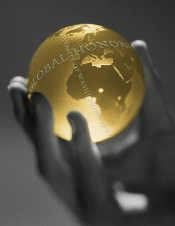Date of Award
Spring 6-2017
Document Type
Undergraduate Thesis
Degree Name
Bachelor of arts (BA)
Department
Global Honors
First Advisor
Ellen Moore
Abstract
Social media users all around the globe use Facebook to stay connected with each other, and it is a dominant source of news: “over 63% of users acquire their news from social media” (Schmidt, 2017, p.3035). The connectivity of social media has created unintended consequences that promote or influence creation and dissemination of misinformation. By literature review and using real world example, this research identifies sources and provocation of inaccurate news, and explores how user interaction within social media promotes dissemination of distorted information.
Wardle (2017) from FirstDraftNews, suggests that there are seven distinct types of content and eight different motivators of questionable content found on social media online. Any questionable content found online may be motivated by one or more of the eight motivators. Propaganda, and political influences are among the top motivators to influence types of questionable content (Wardle, 2017).
The bias content created by social media is consumed by users in a polarized cluster of users and communities. Our own motivation to seek for information, confirmation bias, drives to reinforce previous knowledge and dismiss contradicting information. This infinite loop of search for reinforcement and dismissal of additional or contradicting information continues to create and distance the polarized communities of Facebook. In other words, social homogeneity is the primary driver of content diffusion, which results in polarized clusters, multiplied by the echo chamber effect (Vicario, 2016).
Recommended Citation
Hong, Sungwoo, "Like, Comment, and Share: Distortion of Information on Facebook" (2017). Global Honors Theses. 47.
https://digitalcommons.tacoma.uw.edu/gh_theses/47
Included in
Business and Corporate Communications Commons, Communication Technology and New Media Commons, Mass Communication Commons, Organizational Communication Commons, Social Media Commons

